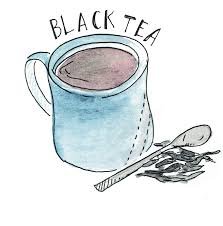⭐Happy Wednesday Steemians!⭐
This week I thought we'd just pick up where we left off last week - understanding how to pair wine & food. When it comes right down to it, people are going to drink what they want to drink and eat what they want to eat, but if you follow some general guidelines and understand them a bit, your probably going to have a more exciting pairing experience!
We already talked guidelines last week, so now l'm going to break those down a bit. If you've been out with some wino friends, you've probably heard them talk about wines being full-bodied, light-bodied, tannic, acidic, etc. These are just components to different types of wine.
Body - this is the 'weight' of the wine. When you take a sip, does it feel light or heavy in your mouth? Some people compare it to as if you had sip of water (light body), milk (medium body) , or cream (full body). In my opinion, cream is too much. If you take a sip of wine and it feels as heavy as cream in your mouth, TAKE IT BACK! I like the comparison of water, skim milk, and whole milk better. Take a sip and let it sit on your tongue for a second. Does is seem super thin or is it a little richer? This is how you determine the 'body' of a wine.
Legs - I'm just going be right up front about this - the legs of wine HAVE NOTHING TO DO WITH QUALITY!

The amount of people I see at wine tastings who are swirling their glass around while saying 'oohh look at the legs, it must be a good one!' makes me want to walk right up to them knock that glass out of their hand! When I first got started in wine tasting, I'll admit that I heard a lot of people saying that so I thought it was true - legs must equal quality. I didn't know any better so I just went with it. But I'm here to tell you that legs do not equal quality, all they do is represent how much ALCOHOL is in the wine. And they look cool. So swirl and enjoy the look of them, but then forget about them and move on to smelling and tasting. :)
Tannin - have you ever left a teabag in your cup for too long and then your tea is so strong that it drys your mouth out? That mouth-drying feeling is tannin.

The tannins in wine come from the grape juice being in contact with the skins, pips, and/or stems of the grapes for a period of time. This is why you find tannins more in red wine than white, because of the extended contact with these components. So next time you take a sip of red wine, swirl it around your mouth and after swallowing, pay attention to how it makes your mouth feel! Does your tongue feel dry? Your gums? Then there's probably a decent amount of tannin in that wine.
There are a few other points that help you understand a wine better, but the last one I'm going to touch on is acidity. Pour yourself a glass of lemonade and take a sip. It's super refreshing and almost makes you pucker right? That refreshing tartness is due to the fact that it has a high acidity.

Now put the lemonade down and go pour yourself a glass of wine (me at every family gathering), and try to see what you're palate tells you about the acidity level. Is it as mouth-watering as the lemonade? Or is it a little mellower? If you can't seem to figure it out then just take another sip. And if you have to, take another sip. You'll either eventually have an idea about acidity or worst case scenario you'll have a good day buzz going... ;)
Keep all of these things in mind when it comes to food & wine pairing. Go back to my last 'Wine 101 Wednesday' and look over the guidelines again, and I bet they'll make a bit more sense now. :):)
So what was the most important thing that we took away from today? DON'T TALK ABOUT THE LEGS! I beg of you...
Hope you all are having a great week so far!
Thanks for reading, and don't forget to vote & re-steem
Jen 🍷
delicious
Well as for wines I don't really know how to taste it or differentiate it. But that of lemonade, I know. Nice one
But I don't really understand the legs
@prettyprecy it "represents" a higher alcohol level in a wine. Most people don't use it though for reviewing or evaluating wines. Just read the label to tell what the ABV.
As always excelent post! Thanks!
So legs refers to alcohol content? What am I looking at when I swirl the glass? How do I know it 'has legs'?
I'm sorry, I shouldn't posted a picture of what the legs of a wine look like too! :P They are the droplets on the side of the glass...
Oooh. Got it. I assume more legs means more alcohol?
@captenredbeard - yes, it can actually represent two things - a sweeter wine and/or a higher alcohol wine. But no one really uses it to gauge either at this point in the industry.
Makes sense. Thanks!
Please upvote and resteem @cappatung